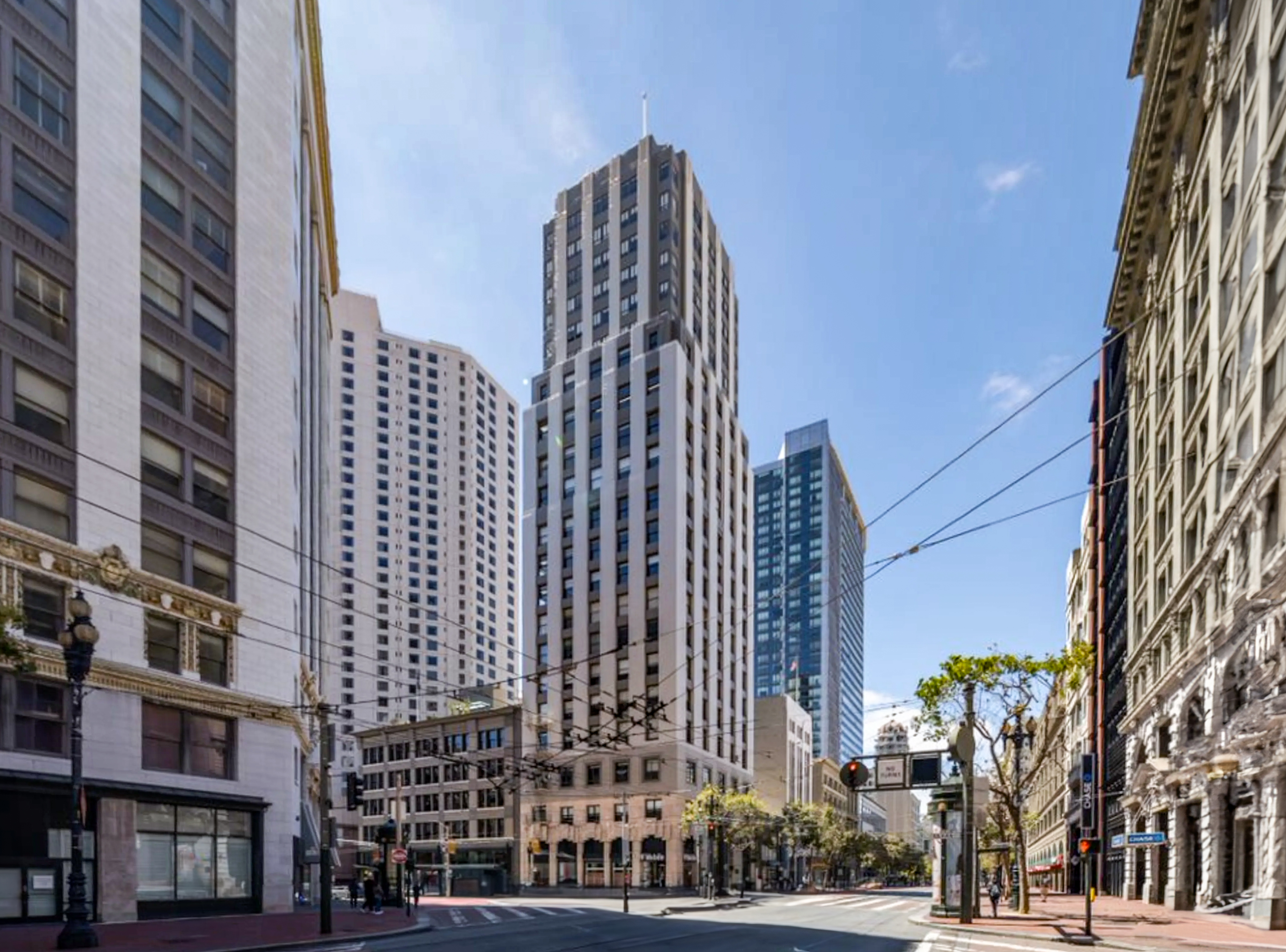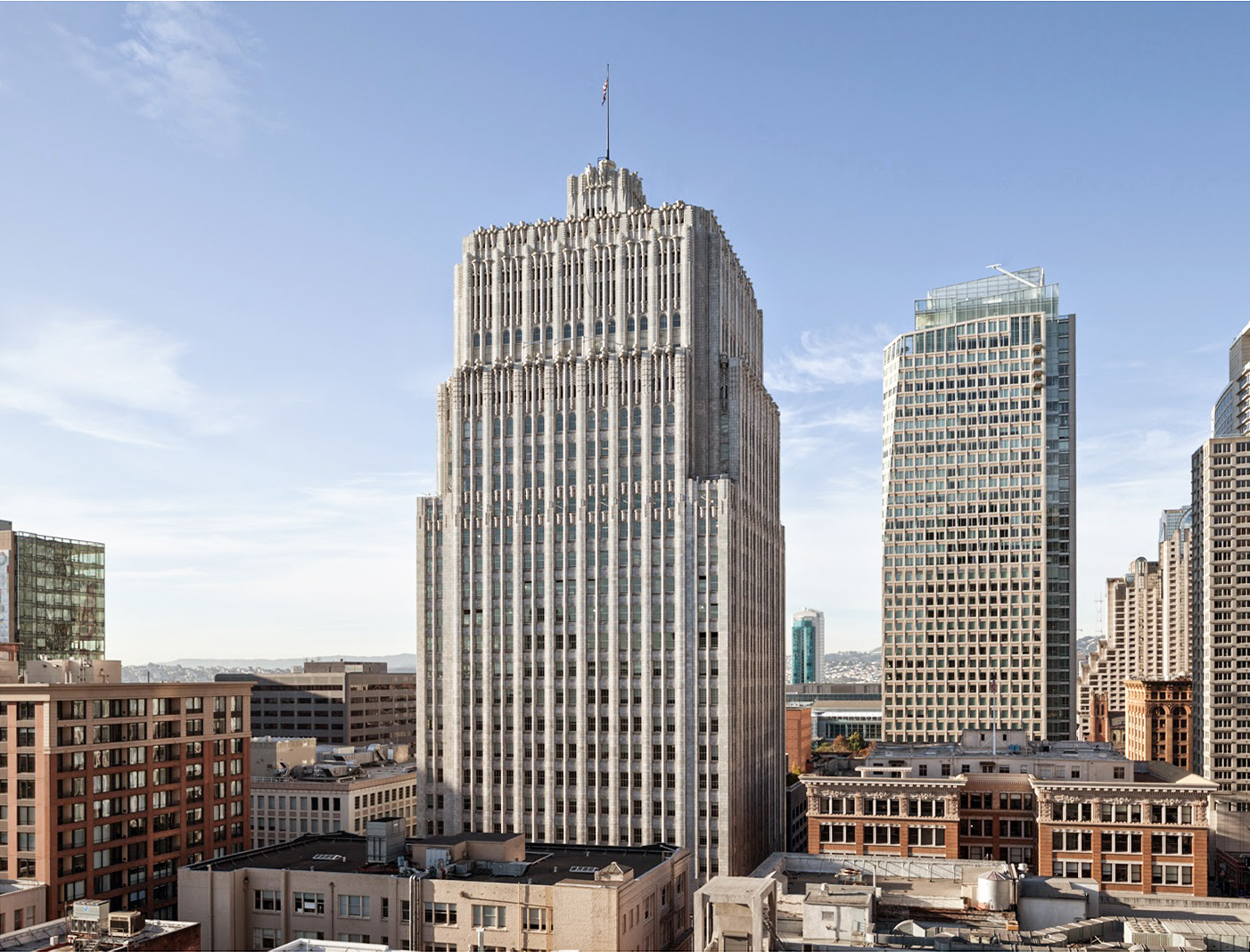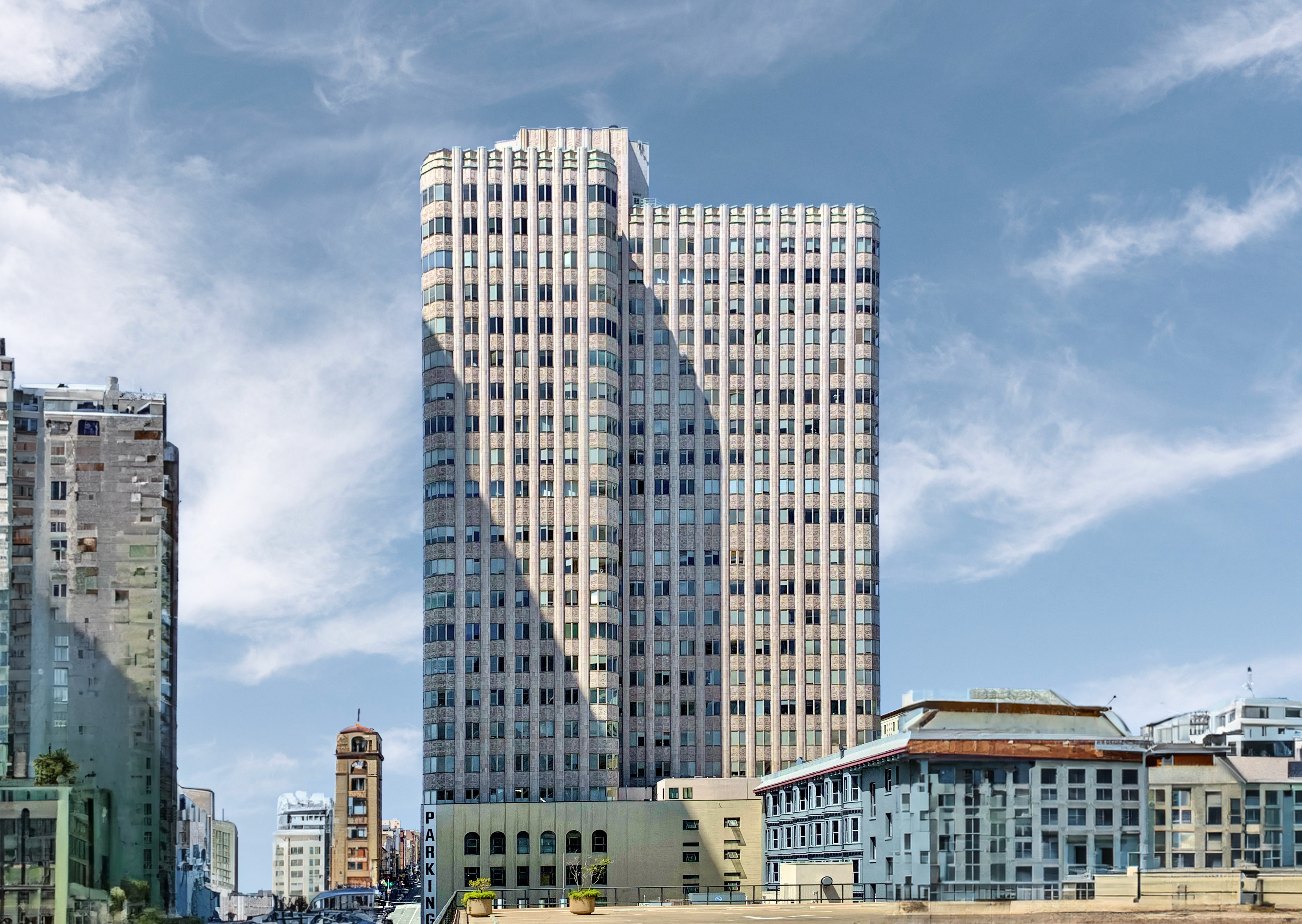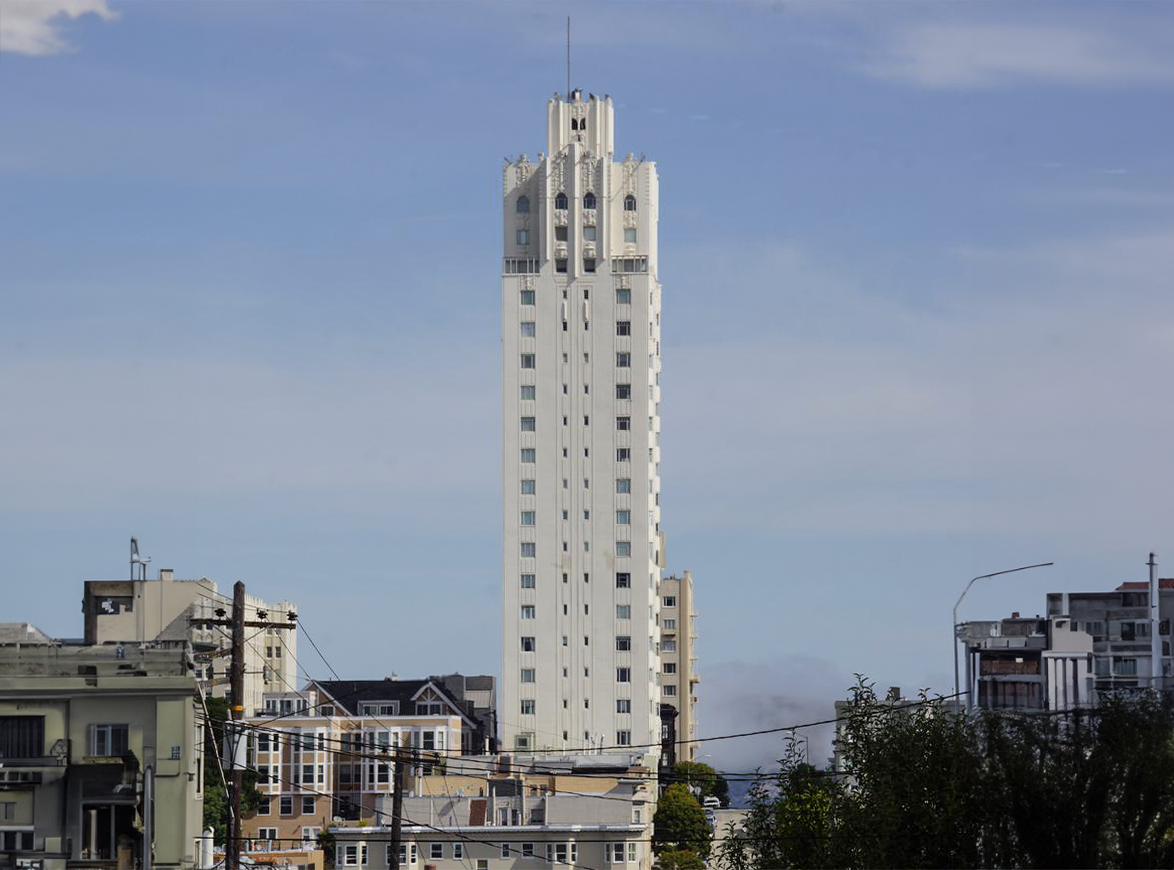The Central Tower is an Art-deco skyscraper designed by Albert Roller, and built between 1937 and 1938 in San Francisco, CA.
Central Tower is not the only name you might know this building by though. It is common for companies to want to attach their names to iconic buildings when they move in, or for the general public to come up with nicknames, and this one is no exception. The Central Tower is also known, or has been known as, Call Building, or Spreckels Building.
Its precise street address is 703 Market Street, San Francisco, CA. You can also find it on the map here.
The building has been restored 2 times over the years to ensure its conservation and adaptation to the pass of time. The main restoration works happened in 1895 and 2017.





